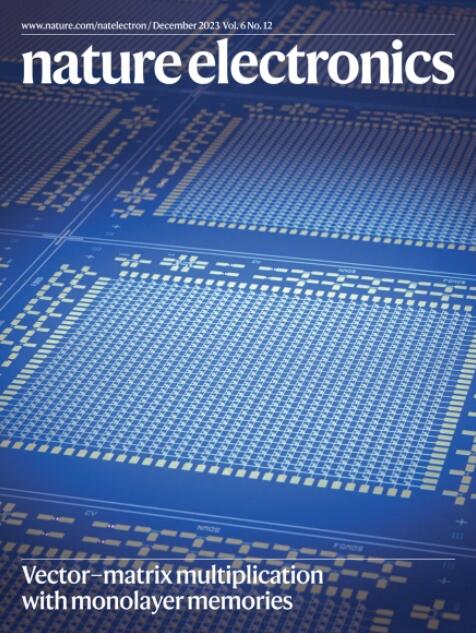一种基于二维材料背板的柔性有源矩阵x射线探测器
IF 33.7
1区 工程技术
Q1 ENGINEERING, ELECTRICAL & ELECTRONIC
引用次数: 0
摘要
传统的平板x射线探测器在成像非平面几何图形时存在图像畸变和不均匀性。柔性x射线探测器可以在非平面目标表面进行保形拟合,从而减少图像畸变。然而,要在提供必要的机械灵活性的同时保持良好的载流子迁移率和光响应性,制造薄膜晶体管和光探测器背板是具有挑战性的。本文报道了一种柔性有源矩阵x射线探测器,其背板基于二维二硫化钼(MoS2)晶体管和石墨烯/MoS2光电探测器。该背板面积为3cm × 3cm,共3600像素,在闪烁体发射波长(544 nm)附近具有17.31 cm2 V−1 s−1的高电子迁移率和9.37 a W−1的光响应性。我们使用基于生成对抗网络的后处理来抑制固有的设备噪声,并表明该方法可以在较低的x射线曝光下提供高质量的图像,而不是通常需要的医疗诊断和工业检查。本文章由计算机程序翻译,如有差异,请以英文原文为准。


A flexible active-matrix X-ray detector with a backplane based on two-dimensional materials
Conventional flat-panel X-ray detectors suffer from image distortion and non-uniformity when imaging non-planar geometries. Flexible X-ray detectors can conformally fit on a non-planar target surface and thus reduce image distortion. However, it is challenging to create thin-film transistors and photodetector backplanes that offer the necessary mechanical flexibility while maintaining good carrier mobility and photoresponsivity. Here we report a flexible active-matrix X-ray detector that has a backplane based on two-dimensional molybdenum disulfide (MoS2) transistors and graphene/MoS2 photodetectors. The backplane covers a large area of 3 cm × 3 cm with a total of 3,600 pixels, and exhibits a high electron mobility of 17.31 cm2 V−1 s−1 and a photoresponsivity of 9.37 A W−1 near the scintillator emission wavelength (544 nm). We use generative adversarial network-based post-processing to suppress inherent device noise, and show that the approach can provide high-quality images under lower X-ray exposure than typically needed for medical diagnosis and industrial inspection. A flexible X-ray detector that has a backplane based on two-dimensional molybdenum sulfide (MoS2) transistors and graphene/MoS2 photodetectors can produce images with high uniformity and minimal distortion by conforming to the curvature of non-planar targets.
求助全文
通过发布文献求助,成功后即可免费获取论文全文。
去求助
来源期刊

Nature Electronics
Engineering-Electrical and Electronic Engineering
CiteScore
47.50
自引率
2.30%
发文量
159
期刊介绍:
Nature Electronics is a comprehensive journal that publishes both fundamental and applied research in the field of electronics. It encompasses a wide range of topics, including the study of new phenomena and devices, the design and construction of electronic circuits, and the practical applications of electronics. In addition, the journal explores the commercial and industrial aspects of electronics research.
The primary focus of Nature Electronics is on the development of technology and its potential impact on society. The journal incorporates the contributions of scientists, engineers, and industry professionals, offering a platform for their research findings. Moreover, Nature Electronics provides insightful commentary, thorough reviews, and analysis of the key issues that shape the field, as well as the technologies that are reshaping society.
Like all journals within the prestigious Nature brand, Nature Electronics upholds the highest standards of quality. It maintains a dedicated team of professional editors and follows a fair and rigorous peer-review process. The journal also ensures impeccable copy-editing and production, enabling swift publication. Additionally, Nature Electronics prides itself on its editorial independence, ensuring unbiased and impartial reporting.
In summary, Nature Electronics is a leading journal that publishes cutting-edge research in electronics. With its multidisciplinary approach and commitment to excellence, the journal serves as a valuable resource for scientists, engineers, and industry professionals seeking to stay at the forefront of advancements in the field.
 求助内容:
求助内容: 应助结果提醒方式:
应助结果提醒方式:


